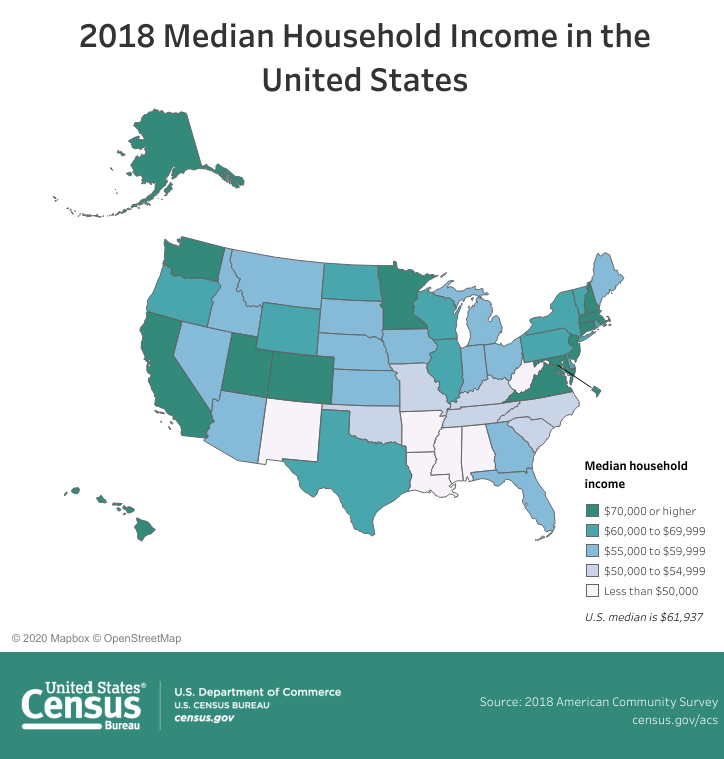Let us know what type of content you'd like to see more of. Fill out our three question survey.
How the COVID-19 Pandemic is Accentuating the Digital Divide in the United States
Aug 6, 2020
For those of us who work in digital development internationally, the pervasiveness of the global digital divide is constantly top of mind. The majority of our work requires us to understand the digital ecosystem in which we are operating to reach different segments of the population in a specific country. At home in the United States, COVID-19 and the push for virtual schooling and telemedicine has laid bare, for many Americans, how significant and challenging the digital divide is within the United States.
A recent op-ed in the Washington Post summarized the challenges of the American digital divide. In summary, the challenges fall under the following categories:
-
Limited options for affordable internet access, in some cases due to inadequate choice or competition in the market.
-
Limited digital literacy skills, most commonly among seniors (those 65 and older).
-
Limited access to digital devices.
-
Patchwork policies and initiatives across states to increase access to affordable internet.
None of these challenges are a surprise to those of us who work within the digital development community. Although the digital divide in the United States by no means compares to the digital divide in many of the low- and middle-income countries in which we work, the challenges are no less significant. According to a 2019 report by the Federal Reserve Bank in Kansas City on the U.S. digital divide, 34 million Americans lack access to fixed broadband. Of those who do not have access, the majority live in rural areas or are low-income households. For instance, the report found that only 53 percent of adults with an annual income of less than $30,000 had access to broadband at home, in comparison to 95 percent of adults with an annual income of $75,000. Without access to affordable broadband, these households are unable to do data-intensive tasks such as accessing online learning, a current cornerstone of American education as the country continues to battle with COVID-19.

For students in rural areas or in low-income households, the digital divide poses an immense threat to their access to education. According to the Legal Defense and Educational Fund, children of color are facing increased barriers to accessing online educational materials during the pandemic in comparison to their white peers. In some cases, this is because their families are unable to afford the monthly bill for high-speed internet access required to participate in virtual learning. For example, in Columbus, Ohio 1 in 4 students in the school district did not participate in virtual learning after schools closed in March, in many cases due to either inability to access a high-speed internet connection at home or limited digital literacy. In rural communities where broadband access is also limited either due to limited infrastructure or cost, some students resorted to accessing free WiFi by parking their cars outside coffee shops or fast-food restaurants to complete their studies during the pandemic. As the new school year quickly approaches and many school districts plan to hold virtual classes, another semester of online learning threatens to leave millions of American students behind.
The rural v. urban and high-income v. low-income household divide also is evident as many service industries continue to encourage their employees to work from home while many other adults working in critical industries or lower-income sectors face increased health risks to continue providing for their families or in some cases have lost their jobs. For families that cannot afford broadband access at home, many choose to rely solely on mobile data connections to access the internet. This not only poses a challenge for adults trying to work from home using a mobile data connection but can also impede their access to local government services, such as filing for unemployment since some states have not made their websites mobile-friendly.
For seniors in American communities, the digital divide is mostly a result of limited digital literacy. Clear examples of this are highlighted by the push for telemedicine during the pandemic, that either rely on video services through a health care provider’s software of choice or video conferencing via mobile technology. According to the U.S. Census, one in three households headed by a senior do not have access to a computer. Many seniors likewise do not own a smartphone nor have the digital literacy skills to join a telemedicine appointment easily. We touched on many of these issues in a previous post about access to equitable healthcare.
These examples only begin to skim the surface of how the COVID-19 health crisis has shed light on and further exacerbated the negative effects of the digital divide in the United States. Dozens of efforts across states are underway to address many of these challenges (a snippet of examples in, Alaska, Ohio, and Washington) . As members of the digital development community, we have a lot to offer local policymakers or foundations looking to bridge the digital divide in America. We understand why efforts like One Laptop per Child failed, the importance of using the Principles of Digital Development as guardrails for new digital initiatives, why understanding a digital ecosystem from national-level policies to individual socioeconomic factors are key to developing human-centered digital interventions, and how to successfully engage private sector actors to contribute to bridging the digital divide. Our wealth of experience supporting digital development globally can help guide high-income countries, like the United States, to address their own digital divides more effectively.